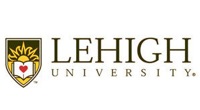Below is a summary of the abstract you submitted. Presenting author(s) is shown in bold.
If any changes need to be made, you can modify the abstract or change the authors.
You can also download a .docx version of this abstract.
If there are any problems, please email Dan at dar78@pitt.edu and he'll take care of them!
This abstract was last modified on May 19, 2021 at 5:05 p.m..

Lehigh’s SEA-PHAGES (PHAGES) and SEA-GENES (GENES) programs provide collaborative research opportunities for undergraduates at all academic levels. PHAGES students can extend their research by enrolling in an advanced phage genetics laboratory to carry out independent investigations into genome structural diversity, host-range interactions, phage gene functions, and phage biology in general. Of particular interest has been our advanced phage group’s focus on immunity mechanisms that protect cluster N lysogens (particularly cluster N phage Butters) from attack by heterotypic phages. Our group has identified several Butters genes primarily in the central variable region (CVR) of the genome that are part of the mechanism to differentially protect a Butters lysogen from infection by cluster A3 phage PurpleHaze and cluster I1 phage Island3, for example. The availability of the GENES program gives PHAGES students additional options to explore functions of Butters genes and phage-host interactions. Students in our advanced group have also investigated cluster W phage Taptic because of its unexpected ability to form a putative lysogen despite the lack of canonical machinery for lysogeny establishment through integration or a complete system for chromosomal partitioning (only ParB [gp74] is present, but no annotated ParA). Superinfection immunity tests for the Taptic lysogen show expected homotypic immunity with cluster W phage Jeon and reduced plating efficiencies for heterotypic F1 phage Tweety compared to the control, suggesting different prophage-mediated mechanisms affecting infection by these phages. Genomic sequencing of the Taptic lysogen is consistent with the presence of an extrachromosomal prophage; yet, the mechanism remains unknown. Though not annotated as such, several Taptic genes may encode proteins involved in either transcriptional or translational regulation based on HHPred analyses. We are currently focusing on the function of Taptic gp29, which based on structural conservation, may encode a small subunit ribosomal protein. Further investigation of several of these questions has been enhanced by collaborations and the use of shared experimental resources and tools between our PHAGES and GENES programs. Experimental collaboration between PHAGES and GENES has strengthened the undergraduate research community, allowing students to sustain their interests in phage research throughout their academic career. We will discuss our most recent collective research updates on cluster N phages and cluster W Taptic, demonstrating how integration of several program research goals provides more comprehensive investigations of phage-host interactions, phage gene expression, and phage genomic diversity.


